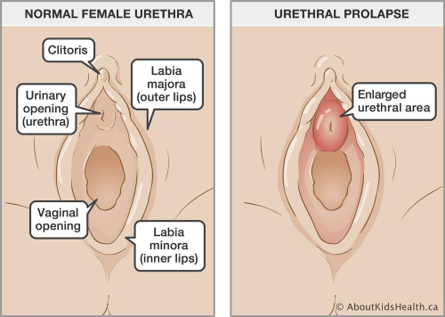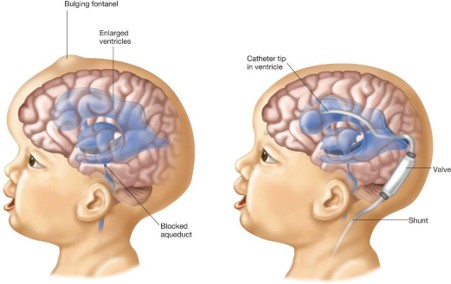Which factor predisposes the urinary tract to infection?
Prostatic secretions in males
Short urethra in young girls
Frequent emptying of the bladder
increased fluid intake
The Correct Answer is B
The anatomy of the urinary tract can influence the susceptibility to urinary tract infections (UTIs). In the case of young girls, their urethra is shorter compared to adult females, which increases the likelihood of bacteria reaching the bladder. The shorter urethra provides a shorter distance for bacteria to travel from the outside of the body to the bladder, making it easier for bacteria to enter and cause an infection.
Prostatic secretions in males in (option A) is incorrect because they are not directly related to the increased susceptibility to UTIs. Prostatic secretions can, however, contribute to conditions like prostatitis, which is an inflammation of the prostate gland that can be associated with urinary symptoms and sometimes bacterial infections.
Frequent emptying of the bladder in (option C) is incorrect because it is generally considered a healthy practice as it helps to flush out any potential bacteria in the urinary tract. It does not predispose the urinary tract to infection.
Increased fluid intake in (option D) is incorrect because it is generally encouraged to maintain proper hydration and urinary tract health. It can help to flush out bacteria from the urinary system, reducing the risk of infection.
While these factors may have implications for urinary tract health, the specific factor that predisposes the urinary tract to infection, particularly in young girls, is the short urethra (B).

Nursing Test Bank
Naxlex Comprehensive Predictor Exams
Related Questions
Correct Answer is C
Explanation
Hydrocephalus refers to a condition characterized by an abnormal accumulation ofcerebrospinal fluid (CSF) within the ventricles of the brain. In infants, hydrocephalus cancause the head to enlarge rapidly as a result of the increased pressure exerted by theaccumulatingfluid.Thisisknownas"rapidheadgrowth."Theincreasedintracranialpressurecanlead to irritabilityand poorappetite in infants.
The distended scalp veins are another common sign of hydrocephalus. As the fluidaccumulates,itputs pressureon thebloodvessels inthe brain,causingtheveinsin thescalptobecome morevisible and distended.
Cerebral palsy in (option A) is incorrect because is a neurological disorder that affects bodymovementandmusclecoordination,butitdoesnottypicallypresentwithrapid headgrowthordistended scalp veins.
Syndrome of inappropriate antidiuretic hormone (SIADH) in (option B) is incorrect becauseitisacondition characterized byexcessivesecretionofantidiuretichormone,leadingtofluidimbalance, but it does not usually cause rapid head growth or distended scalp veins. Reye'ssyndrome (D) is a rare condition that primarily affects the liver and brain, and it does nottypicallypresent with rapid headgrowthor distended scalp veins.
Therefore, based on the signs described, hydrocephalus (C) is the most likely disorder in thiscase.Itisimportantto seekmedicalattentionpromptlyforaproperdiagnosisand appropriatemanagementofhydrocephalus in infants.

Correct Answer is B
Explanation
The primary concern when it comes to a synthetic cast is to keep it dry during bathing or showering. Moisture can weaken the cast material and lead to skin irritation or infection. Therefore, covering the cast with plastic and waterproof tape helps to protect it from getting wet.
Applying a heating pad to the cast if the child has swelling in the affected extremity in (Option A) is incorrect because applying a heating pad to the cast can increase the risk of burns and is not recommended. If the child has swelling in the affected extremity, it is important to elevate the limb and follow any specific instructions provided by the healthcare provider.
Splitting the cast if the child complains of numbness or pain in (Option C) is also incorrect. Splitting the cast, or attempting to modify or adjust it, should not be done without medical supervision. If the child complains of numbness or pain, it is important to notify the healthcare provider for further evaluation and appropriate management.
|
Wrapping the outer surface of the cast with an Ace bandage in (Option D) is incorrect as well. Wrapping the outer surface of the cast with an Ace bandage or any additional material is not recommended unless specifically instructed by the healthcare provider. It can affect the fit of the cast, alter the healing process, and potentially cause complications |

Whether you are a student looking to ace your exams or a practicing nurse seeking to enhance your expertise , our nursing education contents will empower you with the confidence and competence to make a difference in the lives of patients and become a respected leader in the healthcare field.
Visit Naxlex, invest in your future and unlock endless possibilities with our unparalleled nursing education contents today
Report Wrong Answer on the Current Question
Do you disagree with the answer? If yes, what is your expected answer? Explain.
Kindly be descriptive with the issue you are facing.
